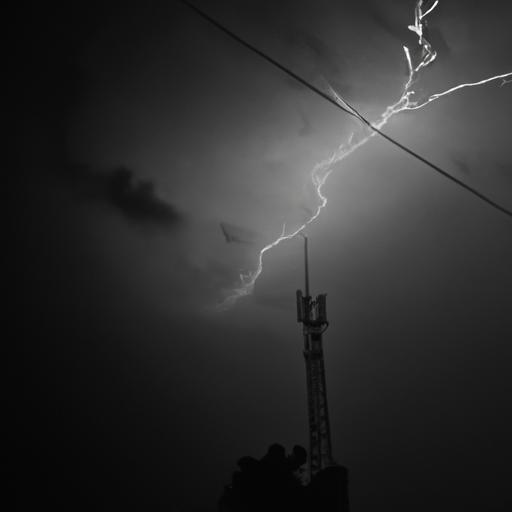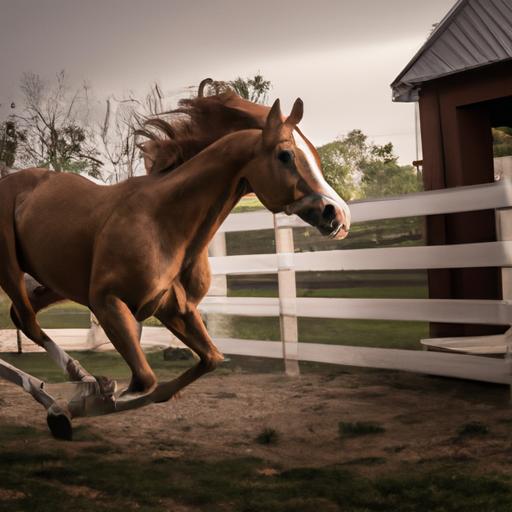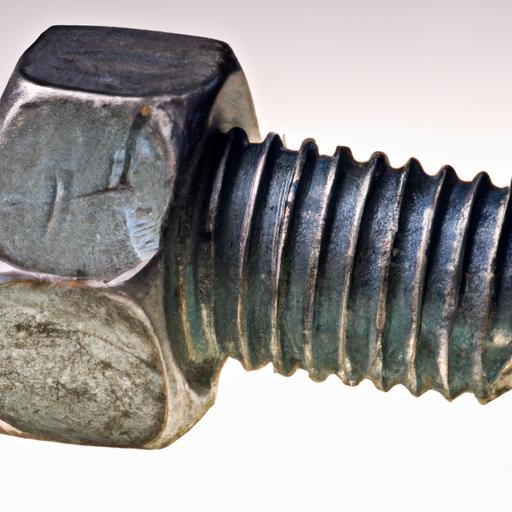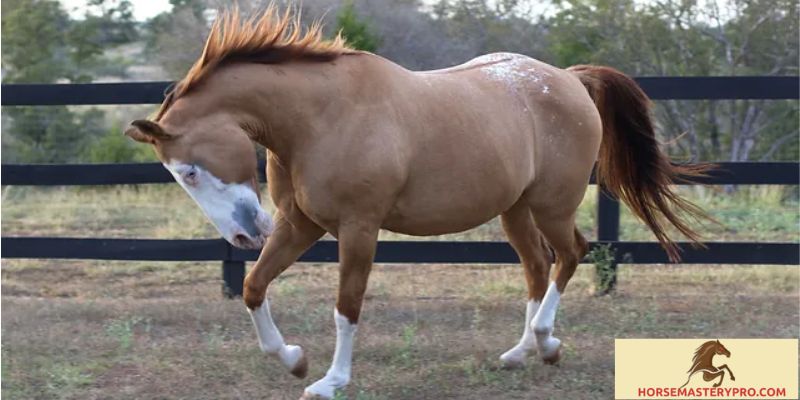Discover the crucial art of recognizing equine behavior bolting. Learn to identify signs and cues, ensuring early prevention for safer horse riding.
Imagine riding through a picturesque meadow, the wind gently rustling through your horse’s mane, when suddenly, without warning, your equine companion takes off at breakneck speed. Your heart races, your grip tightens, and panic sets in. This sudden bolt is not only terrifying but can also pose a significant risk to both horse and rider. Today, we delve into the intriguing world of equine behavior bolting, exploring its causes, signs, and prevention strategies.
At its core, equine behavior bolting refers to the sudden and uncontrollable urge of a horse to run at high speeds, often without apparent reason or warning. This behavior can be triggered by various factors, including fear, pain, or simply an instinctual response to perceived threats. Understanding why horses bolt is crucial in ensuring their safety and the safety of those around them.
Addressing bolting behavior is of utmost importance for any horse owner or rider. The potential consequences of an uncontrolled bolt can range from minor injuries to catastrophic accidents. By gaining insight into the underlying causes and recognizing the warning signs, we can take proactive steps to prevent bolting incidents and create a harmonious partnership with our equine companions.
In this comprehensive article, we will delve into the depths of equine behavior bolting, exploring its intricacies and providing practical advice on managing and preventing this behavior. Whether you are an experienced equestrian or a novice rider, understanding the nuances of bolting will empower you to navigate the equestrian world with confidence and ease.
So, let’s embark on this enlightening journey together as we unravel the mysteries of equine behavior bolting. In the following sections, we will explore the underlying causes, recognize the telltale signs, and equip you with the tools and knowledge to effectively manage and prevent bolting incidents. Are you ready to dive into the captivating realm of equine psychology? Let’s begin!
Stay tuned for Section 2, where we will delve into the fascinating world of understanding equine behavior bolting and uncover its causes.
Understanding Equine Behavior Bolting

Definition and Causes of Bolting in Horses
To effectively address and manage equine behavior bolting, it is crucial to understand its definition and underlying causes. Bolting refers to the sudden and uncontrollable urge of a horse to run at high speeds, often without any apparent reason or warning. This behavior can be alarming and dangerous, posing risks to both the horse and the rider.
Several factors contribute to the occurrence of bolting in horses. Fear is a significant trigger, as horses may bolt in response to perceived threats or sudden loud noises. Pain or discomfort, such as from ill-fitting tack or underlying health issues, can also lead to bolting behavior. Additionally, horses may bolt when they feel overwhelmed or anxious, making it essential to consider their emotional well-being when addressing this behavior.
Common Triggers for Bolting Behavior
Understanding the common triggers for bolting behavior can help horse owners and riders anticipate and prevent such incidents. Sudden movements or unexpected stimuli, such as a plastic bag rustling in the wind or a car backfiring, can startle a horse and trigger a bolt. Unfamiliar environments, crowded spaces, or chaotic situations can also increase the likelihood of bolting.
Furthermore, inadequate training or improper handling can contribute to bolting behavior. Horses that lack proper groundwork and foundational training may not have the necessary skills to cope with stressful situations, increasing the risk of bolting. Inexperienced riders who struggle to maintain balance and control can inadvertently exacerbate bolting tendencies in horses.
Impact of Bolting on Horse and Rider Safety
The impact of bolting on horse and rider safety cannot be underestimated. When a horse bolts, it can reach high speeds within moments, making it challenging for the rider to regain control. This can result in accidents, injuries, or even fatalities. Horses themselves are also at risk during a bolt, as they may collide with obstacles, injure themselves, or become entangled in their tack.
Additionally, bolting incidents can have long-lasting psychological effects on both horse and rider. For the horse, repeated bolting episodes can reinforce fear and anxiety, making future incidents more likely. Riders who have experienced a bolt may develop fear and lose confidence, affecting their enjoyment and ability to ride.
By recognizing the definition, causes, and impact of equine behavior bolting, we can begin to take proactive measures to address and prevent this behavior. In the following sections, we will explore how to identify the signs and signals of an impending bolt, factors that influence bolting, and effective strategies for managing and preventing bolting incidents. Stay tuned for Section 3, where we will delve into the fascinating world of recognizing bolting signs and signals.
Factors Influencing Equine Bolting

Role of Horse Temperament and Personality in Bolting Behavior
Each horse possesses a unique temperament and personality, which can significantly influence their likelihood of engaging in bolting behavior. Some horses may have a more reactive nature, easily spooked by sudden movements or unfamiliar stimulThese highly sensitive horses may be prone to bolting as a means of self-preservation when they perceive a threat. On the other hand, horses with a calmer and more laid-back disposition may be less susceptible to bolting unless faced with extreme circumstances.
Understanding your horse’s temperament is crucial in addressing and managing bolting tendencies. By recognizing their individual sensitivities and triggers, you can tailor your training and handling techniques to help them overcome their fears and develop a more confident and composed outlook.
Effect of Rider Skill and Experience on Horse Bolting
The rider’s skill and experience play a significant role in influencing a horse’s behavior, including their propensity to bolt. A confident and competent rider can provide clear and consistent cues, establishing a sense of trust and security for the horse. On the other hand, an inexperienced or unbalanced rider may inadvertently convey mixed signals or react anxiously in challenging situations, potentially exacerbating a horse’s fear or anxiety and triggering a bolt.
Investing time in developing your riding skills and knowledge is paramount when it comes to managing and preventing bolting incidents. By honing your abilities, you can effectively communicate with your horse, maintain your composure during stressful situations, and minimize the likelihood of a bolt occurring.
Environment-Related Factors Contributing to Bolting Incidents
The environment in which a horse is kept and ridden can significantly impact their propensity to bolt. Unfamiliar surroundings, loud noises, sudden movements, or the presence of predators can all act as triggers for a horse’s flight response. Additionally, inadequate or unsuitable training areas, poorly maintained equipment, or overcrowded conditions can contribute to a horse’s stress levels, increasing the likelihood of bolting behavior.
Creating a safe and secure environment for your horse is essential in preventing bolting incidents. Providing them with consistent and positive experiences, gradually exposing them to new stimuli, and ensuring their surroundings are free from potential hazards can help alleviate their anxiety and reduce the risk of bolting.
Stay tuned for Section 5, where we will explore effective techniques and strategies for managing and preventing bolting in horses.
Managing and Preventing Bolting in Horses

When it comes to managing and preventing bolting behavior in horses, a proactive approach is key. By implementing effective training techniques, focusing on proper handling and groundwork, and utilizing suitable equipment and aids, we can significantly reduce the risk of bolting incidents and create a safer environment for both horse and rider. Let’s explore these strategies in detail:
Training Techniques to Address and Modify Bolting Behavior
Training plays a crucial role in addressing and modifying bolting behavior in horses. Working with a professional trainer or behaviorist can provide valuable guidance and expertise to effectively address the root causes of bolting. They can help develop a tailored training plan that focuses on desensitizing the horse, building trust, and reinforcing calm and obedient behavior.
One effective technique is desensitization, which involves exposing the horse to gradually increasing levels of stimuli that may trigger bolting. By exposing the horse to these stimuli in a controlled and positive manner, we can help them become more confident and less reactive, reducing the likelihood of bolting. Additionally, incorporating exercises that promote focus, responsiveness, and obedience can enhance the horse’s ability to listen and respond to commands, minimizing the chances of bolting in challenging situations.
Importance of Proper Handling and Groundwork to Prevent Bolting
Proper handling and groundwork lay the foundation for a respectful and well-behaved horse, reducing the risk of bolting. Establishing clear communication and boundaries through consistent and gentle handling builds trust and respect between horse and handler. This, in turn, enhances the horse’s confidence and reduces their inclination to bolt.
Groundwork exercises, such as leading, lunging, and yielding, help develop the horse’s focus, responsiveness, and obedience. They also allow us to assess the horse’s behavior, identify any potential triggers for bolting, and address them in a controlled environment. Consistency, patience, and positive reinforcement are key when working on groundwork, as they foster a positive learning experience and strengthen the horse-handler bond.
Utilizing Equipment and Aids to Enhance Control and Prevent Bolting
Appropriate equipment and aids can significantly enhance control and prevent bolting incidents. Using a well-fitted and suitable bit, bridle, and saddle ensures optimal communication between horse and rider, allowing for precise control and responsiveness. Additionally, incorporating safety equipment such as a properly adjusted martingale or breastplate can provide an extra level of security, reducing the likelihood of bolting and minimizing potential injuries.
However, it is important to note that equipment alone is not a substitute for proper training and handling. It should be used as a complement to a comprehensive approach that focuses on addressing the underlying causes of bolting and developing a harmonious partnership with the horse.
By employing effective training techniques, prioritizing proper handling and groundwork, and utilizing suitable equipment and aids, we can manage and prevent bolting behavior in horses. Remember, prevention is always better than cure, and by investing time and effort in building a strong foundation of trust, communication, and obedience, we can create a safer and more enjoyable equestrian experience.
Stay tuned for Section 6, where we will discuss the importance of seeking professional help for bolting issues and provide resources to assist you in addressing this critical behavior.
Conclusion

In conclusion, equine behavior bolting is a complex and potentially dangerous issue that requires careful attention and understanding from horse owners and riders. By recognizing the signs and signals of an impending bolt, we can take proactive measures to prevent dangerous situations and ensure the safety of both horse and rider.
Throughout this article, we have explored the intricacies of equine behavior bolting, delving into its causes, recognizing the warning signs, and providing strategies for managing and preventing this behavior. Bolting can be triggered by various factors, including fear, pain, or instinctual responses to perceived threats. Early recognition of these signs is crucial in averting potential accidents and maintaining a harmonious partnership with our equine companions.
Remember, prevention is key when it comes to bolting incidents. By investing time in proper training techniques, handling, and groundwork, we can instill confidence and trust in our horses, reducing the likelihood of bolting behavior. Seeking professional help when necessary and addressing underlying causes rather than just symptoms is vital for long-term success.
At Horsemasterypro.com, we prioritize equine safety and strive to provide valuable resources and guidance for horse owners and riders. By deepening our understanding of equine behavior bolting and implementing effective strategies, we can enhance our horsemanship skills and forge a strong bond with our horses.
So, whether you are a seasoned equestrian or a passionate horse lover, take the knowledge gained from this article and apply it to your equine journey. Together, let’s create a world where horses and humans can thrive in harmony, free from the dangers of bolting behavior.
Remember, horsemastery is a lifelong pursuit, and we are here to support you every step of the way. Visit Horsemasterypro.com today and unlock the secrets to becoming the best horseperson you can be.
Bolded: Horsemasterypro.com


